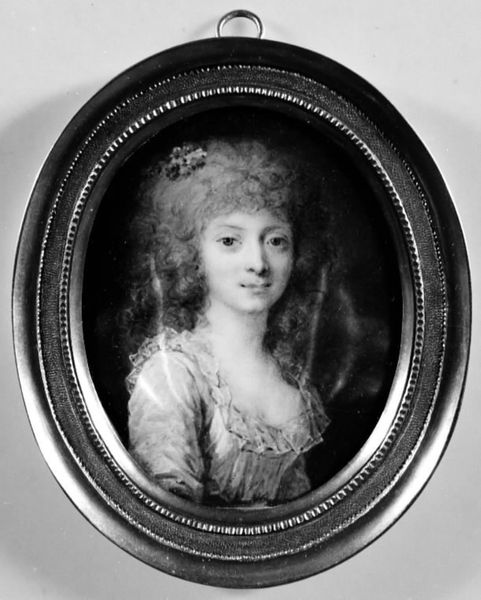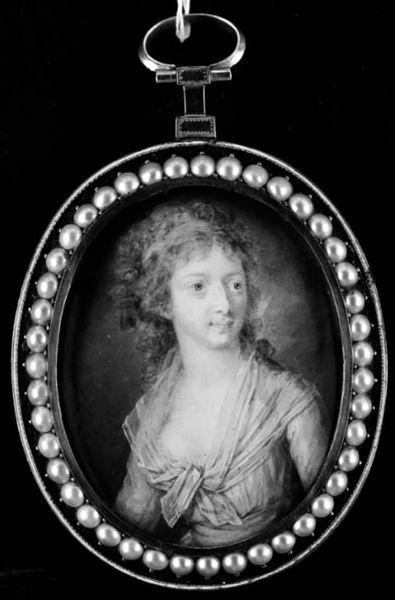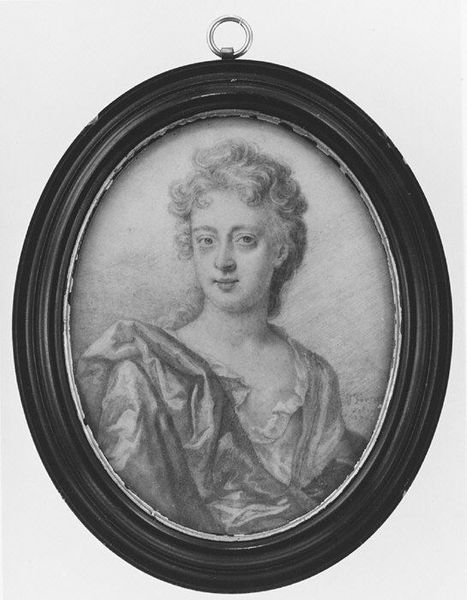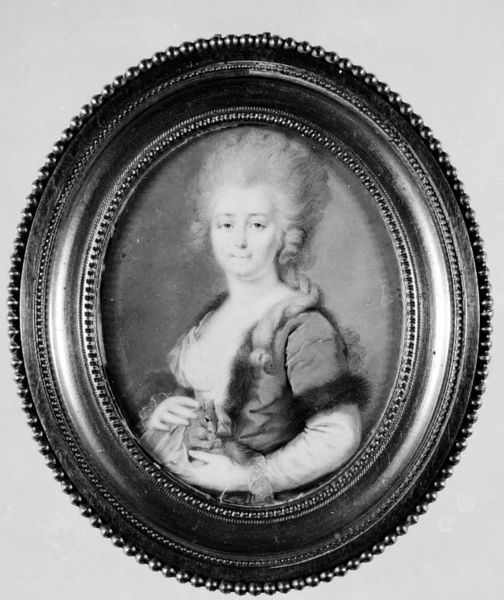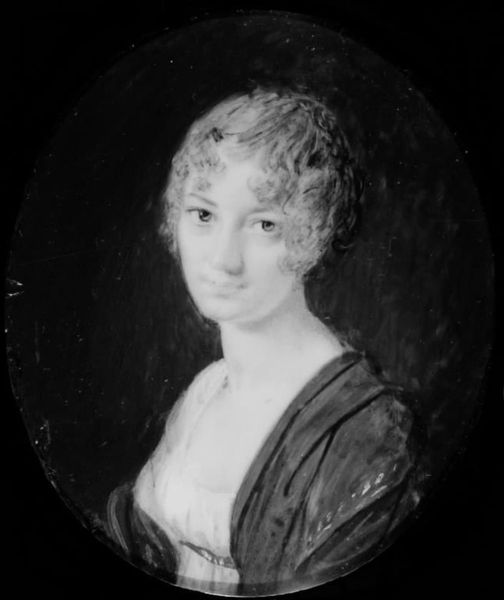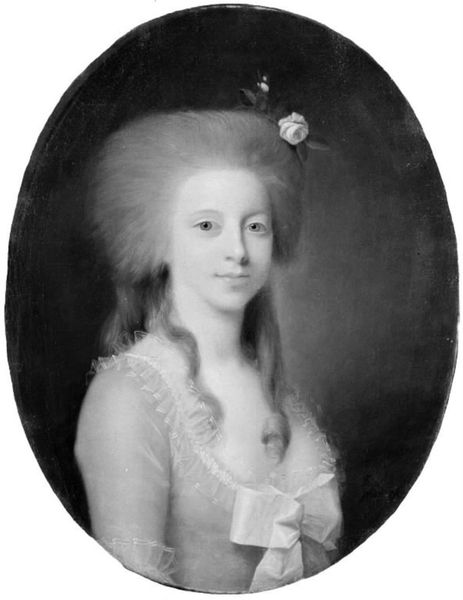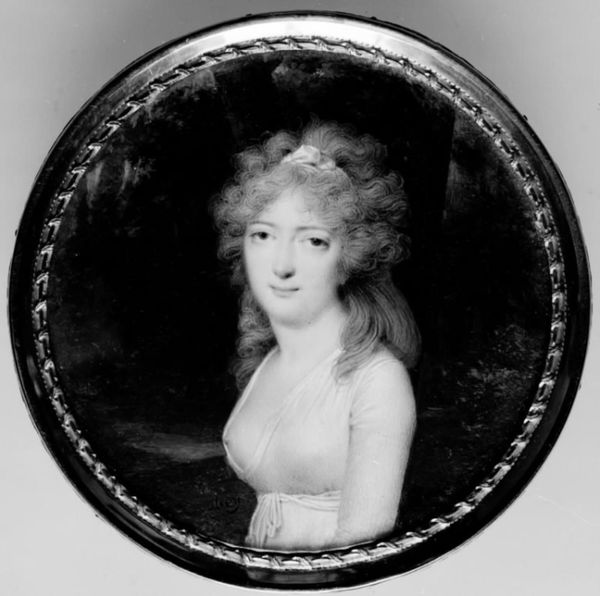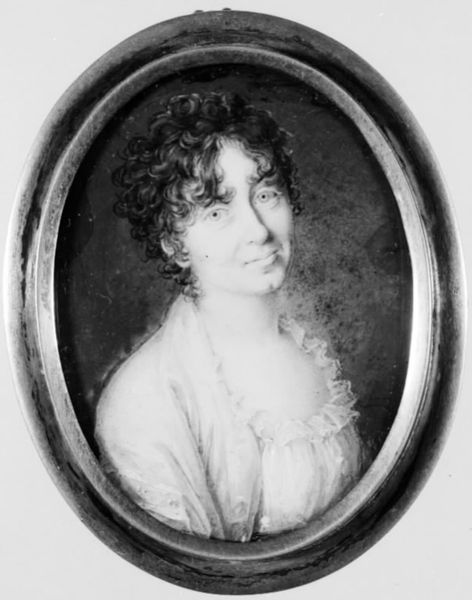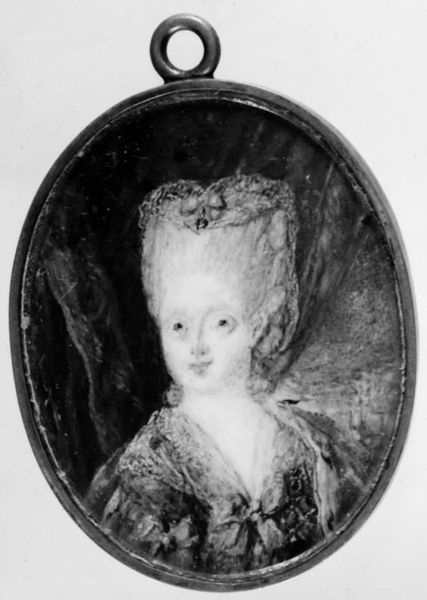
drawing
#
portrait
#
drawing
#
neoclacissism
#
sculpture
#
black and white
#
academic-art
Dimensions: 7.5 cm (None) (None)
Editor: This drawing, “Sibylle” by Christopher Deram, made between 1780 and 1784, presents a portrait in an oval frame. I'm immediately struck by its delicate lines and how the artist captures a sense of quiet contemplation. How do you interpret this work within its historical context? Curator: It’s interesting you note that quietness. For me, this work exemplifies the tension between Neoclassical ideals and the social realities of the late 18th century. Note the woman's gaze; does it seem empowering or passive? This was a period defined by Enlightenment ideals of reason and order, which had specific implications for women in art. Editor: I see what you mean. Her gaze does seem rather passive, almost demure. Was there a prescribed role for women in art and society at this time? Curator: Absolutely. Neoclassical art often reinforced the image of women as symbols of virtue and domesticity, rather than agents of their own destiny. Think about how many portraits depict women within the confines of the home, devoid of any overt expressions of agency or power. Doesn't this portrayal contribute to a visual language that reinforces societal norms and expectations? Editor: So the passivity I perceived wasn’t just a personal interpretation, but perhaps a reflection of the artistic conventions that reinforced social hierarchies. But were there any artists who challenged this status quo? Curator: Indeed, there were! Artists like Angelica Kauffmann, for instance, consciously subverted these expectations, injecting their female subjects with intellectual curiosity and strength. Recognizing the subtle ways in which power dynamics manifest in art can empower us to challenge ingrained biases. It helps us understand both the art and its position within gender and social hierarchies. Editor: That's a fascinating perspective. I’ll definitely look at other portraits from this period with those power dynamics in mind. Curator: And that’s the beginning of a deeper understanding – of seeing beyond the surface to question and analyze the complex stories that artworks tell about our shared past and, indeed, our present.
Comments
No comments
Be the first to comment and join the conversation on the ultimate creative platform.
